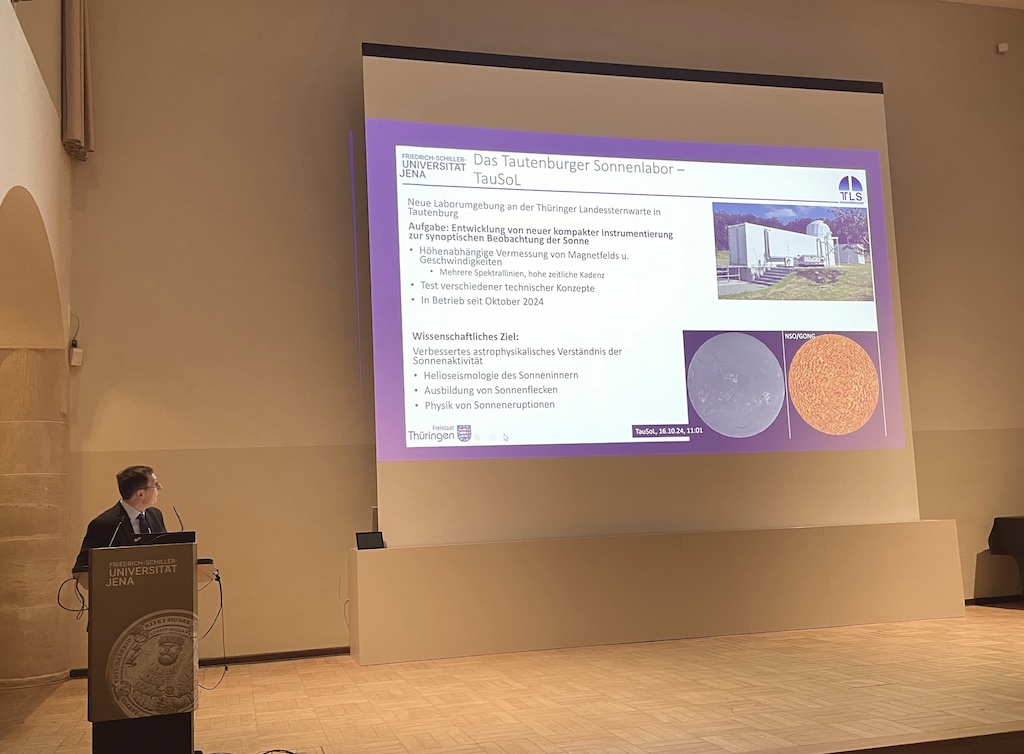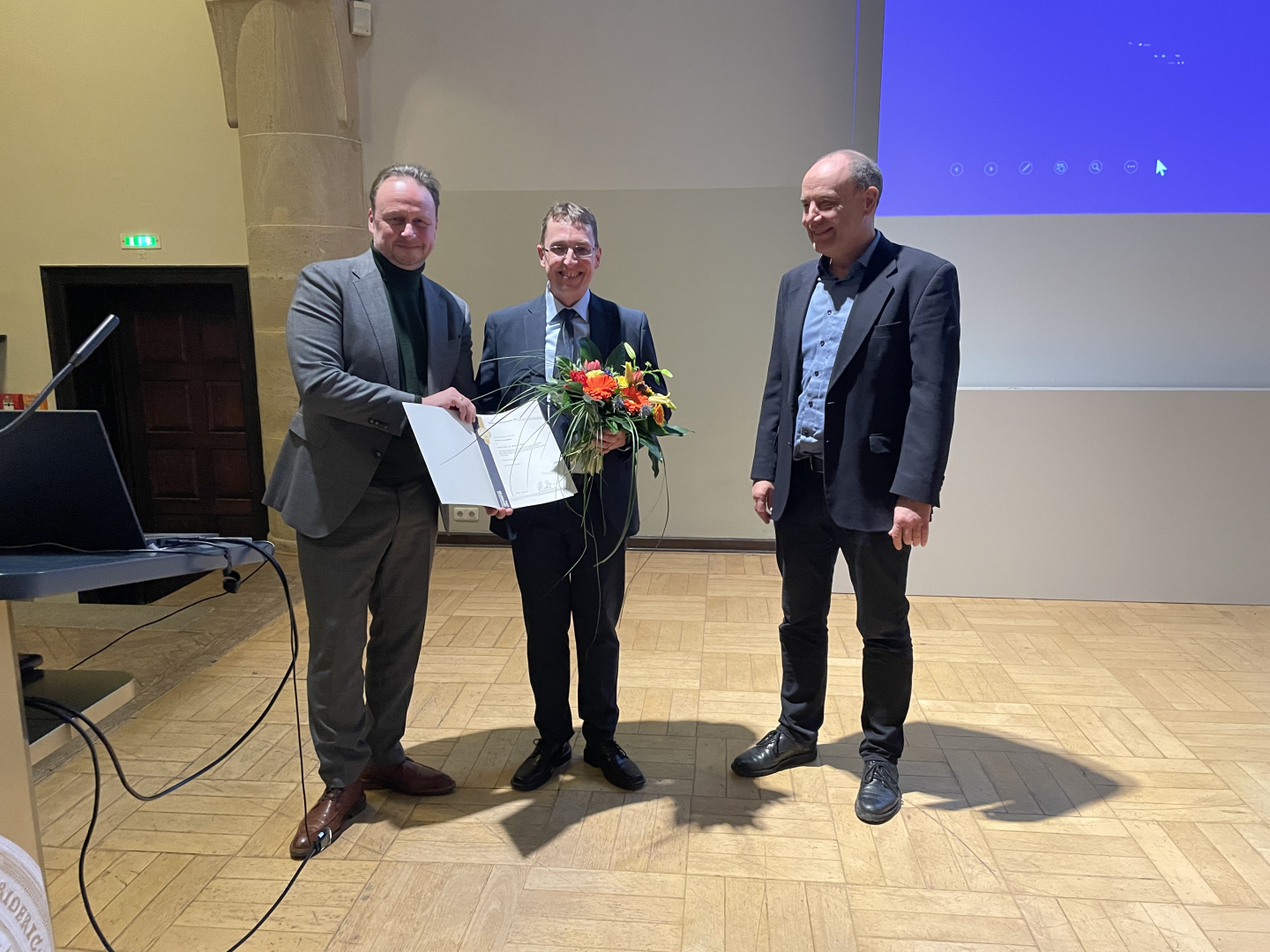The director of the Thuringian State Observatory, Markus Roth, also teaches at the Faculty of Physics and Astronomy at Friedrich Schiller University in Jena. On January 27, 2025, he gave his inaugural lecture on “The Sun in Focus”.
 Markus Roth gives his inaugural lecture at Friedrich-Schiller-University in Jena. Photos: Thuringian State ObservatoryThe sun is the only star that is close enough for astronomers to study it with high resolution. It is therefore a fascinating object of research for Roth. In his lecture, he described how the sun is structured, how it generates energy and how convection cells make the sun bubble.
Markus Roth gives his inaugural lecture at Friedrich-Schiller-University in Jena. Photos: Thuringian State ObservatoryThe sun is the only star that is close enough for astronomers to study it with high resolution. It is therefore a fascinating object of research for Roth. In his lecture, he described how the sun is structured, how it generates energy and how convection cells make the sun bubble.
Roth also explained why sunspots are so exciting. Sunspots are places of a strong magnetic field. These spots are not always visible on the sun. There are times with more and times with fewer spots. Approximately every 11 years, the sun shows more sunspots. They appear dark because they are cooler than their surroundings. We are currently at solar maximum, which means that the sun is very active.
The sun's changing magnetic field repeatedly causes mass ejections. Solar plasma is hurled into space. These eruptions can also affect technical facilities on Earth as solar storms. Astronomers call these processes that take place in space close to Earth "space weather".
In the new solar laboratory at the Thuringian State Observatory, new compact instrumentation is being developed to enable even better observation of the sun. The researchers want to understand solar activity more precisely and measure the magnetic field more accurately. The big challenge is to eventually better predict space weather.
Markus Roth has only now given his inaugural lecture at Friedrich Schiller University, as no inaugural lectures could take place at the start of his professorship in Jena due to the coronavirus pandemic.
If you would like to find out more about the Sun, visit the “Day of Physics and Astronomy 2025” at the Faculty of Physics and Astronomy. It will take place on March 6. Professor Dr. Roth will give a lecture on “The sun - the star we live with” at 9.30 am. From 10 am to 3 pm, the sun can be observed on the roof terrace of the building at Max-Wien-Platz 1 - weather permitting.
 Markus Roth describes the research goals of the Tautenburg Solar Lab Markus Roth describes the research goals of the Tautenburg Solar Lab |
 Professor Dr. Andreas Marx, president of Friedrich-Schiller-University, Professor Dr. Markus Roth, director Thuringian State Observatory, and Universitäts-Professor Dr. Ulf Peschel, Dean of the Physics and Astronomy Department at Friedrich-Schiller-University Professor Dr. Andreas Marx, president of Friedrich-Schiller-University, Professor Dr. Markus Roth, director Thuringian State Observatory, and Universitäts-Professor Dr. Ulf Peschel, Dean of the Physics and Astronomy Department at Friedrich-Schiller-University |

